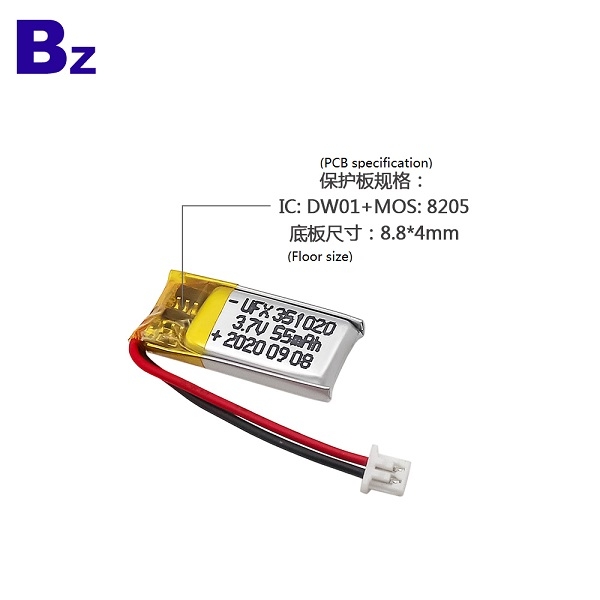What are the common positive and negative materials in the lithium-ion battery industry? The main constituent materials of lithium-ion batteries include electrolytes, separator materials, and positive and negative electrodes. Cathode materials and anode materials are one of the key materials that determine the performance of lithium-ion batteries, and are also the main source of lithium ions in current commercial lithium-ion batteries. Their performance and valence have a greater impact on lithium-ion batteries.

Common cathode materials for lithium batteries
With the continuous development of lithium-ion batteries, the application fields are gradually expanding. The use of cathode materials has changed from singularity to diversification, including: olivine-type lithium iron phosphate, layered cobalt acid Lithium, spinel-type lithium manganate, etc., realize the coexistence of multiple materials. Among the cathode materials for lithium batteries, the most commonly used materials are lithium cobaltate, lithium manganate, lithium iron phosphate and ternary materials (a polymer of nickel, cobalt and manganese).
1. Lithium Cobalt Oxide
As a positive material, it has been applied for the earliest time, and it is still the mainstream cathode material in consumer electronic products. Compared with other cathode materials, it can be seen that the voltage of lithium cobalt oxide is higher during the working process, and the voltage runs more smoothly during charging or discharging, which can meet the requirements of large currents, has strong cycle performance, and has higher conductivity. And the process is relatively stable.
2. Ternary positive material
It has a relatively significant ternary synergistic effect. Compared with lithium cobalt oxide, it can be seen that it has a greater advantage in thermal stability, and the production cost is relatively low, and it can become the best substitute for lithium cobalt oxide. However, its density is low and the cycle performance needs to be improved. In this regard, it can be adjusted by improving the synthesis process and ion doping.
3. Lithium iron phosphate
It has good cycle performance and thermal stability in charging and discharging, and has a strong safety guarantee during use, and the material is green and environmentally friendly, and will not cause serious damage to the environment. At the same time, the price is relatively low. The industry considers it to be the best material for the production of large battery modules.
4. Lithium manganate
In application, it has strong safety and resistance to overcharge. Due to its relatively low price, it has less pollution to the environment, is non-toxic and harmless, and the industrial preparation operation is relatively simple. However, due to the unstable spinel structure during charging or discharging, the Jahn-Teller effect is prone to occur, coupled with the dissolution of manganese at high temperatures, it is easy to reduce the capacity of lithium batteries, so its application is also greatly restricted. .
What are the common anode materials for lithium-ion batteries?
In the lithium-ion battery materials, the negative electrode material is an important component, which can have a greater impact on the performance of the overall lithium battery. At present, anode materials are mainly divided into two categories, one is carbon materials for commercial applications, such as natural graphite, soft carbon, etc., and the other is non-carbon anode materials that are under research and development, but the market prospects are promising. For example, silicon-based materials, alloy materials, tin-gold materials and so on.
The negative electrode of the lithium ion battery is made by mixing the negative active material carbon material or non-carbon material, binder and additives to form a paste glue that is uniformly applied on both sides of the copper foil, dried and rolled. The negative electrode material is the main body of lithium-ion batteries to store lithium, allowing lithium ions to be inserted and extracted during charge and discharge. When a lithium battery is charged, the lithium atoms in the positive electrode are ionized into lithium ions and electrons, and the lithium ions move to the negative electrode to synthesize lithium atoms with the electrons. During discharge, lithium atoms are ionized from the surface of the negative electrode in the graphite crystal into lithium ions and electrons, and lithium atoms are synthesized at the positive electrode.
● Carbon anode material
This type of material is a balanced negative electrode material in terms of energy density, cycle capacity, or cost input. It is also the main material that promotes the birth of lithium-ion batteries. Carbon materials can be divided into two categories, namely Graphitized carbon materials and hard carbon. Among them, the former mainly includes artificial graphite and natural graphite.
● Natural graphite
Natural graphite also has many advantages. Its crystallinity is higher, there are more places where it can be inserted, and the price is lower, making it an ideal lithium-ion battery material. However, it also has certain drawbacks, such as poor compatibility when reacting with electrolyte, and many defects on the surface during pulverization, which will have a large adverse effect on its charging or discharging performance.
From a technical point of view, the anode materials for lithium-ion batteries in the future will show diverse characteristics. The cathode material is one of the key materials that determine the performance of lithium-ion batteries. The cathode material has always been the core of lithium batteries, and its choice directly determines the performance of the battery. The choice of cathode material is mainly, the reversible lithium removal and lithium intercalation transition metal oxides are one of the important components of lithium batteries.



